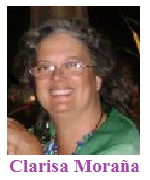Looking for information on translation metrics and quality control Thread poster: Maria Eugenia Farre
|
|---|
Dear forum users:
I am looking for information on translation metrics and guidelines for translation quality control. Can anyone point me to websites, researchers or associations doing work in this field?
Thanks in advance,
ME
| | | |
| Can you keep me posted on any information you get please! | Dec 6, 2001 |
I\'m about to start writing my thesis for my degree in business administration next year, and one of my two topics is \"The opportunities and risks offered by the introduction of a quality management system in a small translation company\".
I am planning on covering more quality issues than just quality control and would be happy to give you a copy of my thesis (I have to write in German) when it\'s done in return for any information you may find.
Alison
| | | |
Telesforo Fernandez (X)
Local time: 01:22
English to Spanish
+ ...
| I wish you had the information | Dec 6, 2001 |
I have read a lot on rates, but not much on quality. I have almost forgotton metrics on quality after these low rates, that do not give breahing space to concentrate on quality.
[ This Message was edited by: on 2001-12-06 09:36 ]
| | | |
It\'s a German standard describing many aspects of the translation process, obviously including quality.
Can somebody please tell me where can I find this standard (in English)?
| | |
|
|
|
Clarisa Moraña 
United States
Local time: 14:52
Member (2002)
English to Spanish
+ ...
| Try the Translation, Theory, and Technology homepage | Dec 6, 2001 |
Hello, María Eugenia.
What about ISO Technical Committe 37 (terminology and other resources)? or the German DIN 2345 standard?
The Translation, Theory and Technology (http://www.ttt.org/) maintained by the Translation Research Group of Brigham Young University\'s Department of Linguistics might be useful for you.
They say: We are actively involved w... See more Hello, María Eugenia.
What about ISO Technical Committe 37 (terminology and other resources)? or the German DIN 2345 standard?
The Translation, Theory and Technology (http://www.ttt.org/) maintained by the Translation Research Group of Brigham Young University\'s Department of Linguistics might be useful for you.
They say: We are actively involved with ISO Technical Committee 37 and LISA\'s OSCAR Special Interest Group (SIG) in the development of data exchange standards. The BYU TRG is part of the SALT Project, a major international effort to test, refine and promote language industry data exchange and content markup standards.
Regards,
Clarisa
▲ Collapse
| | | |
| SAE J2450 and ASTM F15.48 | Dec 6, 2001 |
From a relevant article (First European Automotive Standards Meeting on Translation Quality) published 3 days ago:
\"J2450, an initiative originally conceived of by US automakers GM, Ford and Chrysler, is one of many quality systems designed to define metric standards for automotive engineering. As one component of a quality assurance process, J2450 provides a measure for tagging translation errors, and p... See more From a relevant article (First European Automotive Standards Meeting on Translation Quality) published 3 days ago:
\"J2450, an initiative originally conceived of by US automakers GM, Ford and Chrysler, is one of many quality systems designed to define metric standards for automotive engineering. As one component of a quality assurance process, J2450 provides a measure for tagging translation errors, and produces a weighted score that defines the severity of errors. Industry-wide understanding and agreement on error definitions and classifications is critical for such quality systems to be effective.
J2450 is considered complementary to the American Society for Testing and Materials standard F15.48, which focuses more broadly on the process of acquiring and managing translation services.\" ▲ Collapse
| | | |
| ASTM explanation | Dec 6, 2001 |
From an article on the ASTM standard...
W. Conshohocken, Pa., July 1999 -- Guidelines under development for assuring quality in language translation were further defined and drafted at a recent American Society for Testing and Materials (ASTM) subcommittee meeting and will encompass three areas: translation needs analysis, translation process and translation quality. \"There are many points to g... See more From an article on the ASTM standard...
W. Conshohocken, Pa., July 1999 -- Guidelines under development for assuring quality in language translation were further defined and drafted at a recent American Society for Testing and Materials (ASTM) subcommittee meeting and will encompass three areas: translation needs analysis, translation process and translation quality. \"There are many points to guide an analysis of translation needs but they are organized according to three basic legs, or the \"translation tripod,\" says Dr. Alan Melby, American Translators Association (ATA) and professor of linguistics at Brigham Young University. The first leg, input from translation requesters, is critical to the success of the ASTM subcommittee\'s standards and is needed most.\" \"We can\'t very well develop a quality guide without input from a significant range of requesters,\" says Rosalie Pasquel Wells, a freelance translator. \"The expectations of the translation requester must be clearly understood and articulated if the guide is to be beneficial and effective. For this reason, we are urgently seeking additional members from private industry, the greatest stakeholders, to join the ASTM quality effort,\" she says. \"The committee is eager to address the translation quality concerns of as many industries as possible. In today\'s global market, quality in translation should be the concern of everyone from web-masters to marketing directors. Our success in the global market depends largely on how well we communicate with the rest of the world.\"
ASTM\'s work in this area is the result of an initiative of the ATA and the National Foreign Language Center (NFLC). The group believes the absence of reliable national standards in the field of translation puts consumers at a disadvantage, leading to lost revenue and costly substandard translation services. Once quality guidelines are established, requesters of translation services will be in a position to evaluate the translation providers\' claims against objective service performance criteria. \"This session really helped us define our mission and where we need to concentrate our energies, and getting a first draft down on paper was a major achievement,\" says Steve Lank, subcommittee chairman and Operations Manager of Omega International. \"The purpose of our activities is to produce a quality guide for the U.S. market so even monolingual translation requesters can confidently procure translation services.\" The subcommittee aims to have its first draft document ready for subcommittee voting by mid-January 2000. \"The work of ASTM Subcommittee F15.48 on Language Translation is the first attempt at establishing a quality guide for translation within the United States,\" says Julie Johnson, committee member and assistant professor at the Monterey Institute of International Studies. \"In our search for standards around the world, we were surprised to find that there are very few, yet most people and countries realize the need to ensure quality as it pertains to translation.\" Although the group expects its work to have broad applications and will work to harmonize its standard with others around the world, it is also realistic about its goals. \"We are not trying to impose a worldwide standard based on our personal interpretations of what represents quality in translation. Rather, it is our intention to develop a guide that will help give translation requesters a reasonable assurance they are receiving quality translation work, regardless of whether or not they are proficient in the target language,\" says Lank. ▲ Collapse
| | | |
Telesforo Fernandez (X)
Local time: 01:22
English to Spanish
+ ...
| here is another one | Dec 7, 2001 |
STANDARDS OF PROFESSIONAL PRACTICE FOR CONFERENCE INTERPRETERS AND TRANSLATORS
In the forty years since the American Association of Language Specialists (TAALS) was created, its members have accumulated ample experience in providing interpretation and translation services to a wide range of governmental institutions and private organizations. Members and their employers have worked hard to make each multilingual event a success, and these efforts have enabled us to identify ... See more STANDARDS OF PROFESSIONAL PRACTICE FOR CONFERENCE INTERPRETERS AND TRANSLATORS
In the forty years since the American Association of Language Specialists (TAALS) was created, its members have accumulated ample experience in providing interpretation and translation services to a wide range of governmental institutions and private organizations. Members and their employers have worked hard to make each multilingual event a success, and these efforts have enabled us to identify the following elements as useful in planning multilingual conferences and meetings. The following recommendations are not prescriptive but are designed to guide and orient interpreters and translators in their relations with conference organizers and with one another (see NOTE below).
A. CONFERENCE INTERPRETERS
In the interest of ensuring professional standards of quality, TAALS recommends that its members always endeavor to ensure that physical conditions not hinder them in the performance of their tasks. They must be able to see and hear properly. Simultaneous interpretation without a booth may lead to deterioration in sound quality and to such a level of ambient noise as to disturb both participants and interpreters.
Interpreting teams should be organized so as to avoid the systematic use of relay.
All engagements should be covered by a written contract which stipulates the fee, the duration of the appointment, the working languages, the hours of work, the name of the coordinating interpreter, briefing sessions and/or study days. Travel time and travel arrangements, accommodations, per diem, etc., as appropriate.
Contracts may also include provisions for compensating the interpreter when the proceedings are recorded (see RECORDING below).
Since a contract creates a firm and binding commitment and prevents an interpreter from accepting any other offer for the same period of time, a cancellation clause should be considered by the parties.
There may be provision for a coordinating interpreter, to serve as liaison between the conference organizer and the interpreters. If the coordinating interpreter cannot be present throughout the conference, he or she should designate another interpreter as team leader and acquaint that person with all necessary information.
Whispered interpretation is not generally recommended but may be used to work from one or two languages into a single language and for a small number of listeners.
PREPARATION & BRIEFING
Since the interpreter must be well prepared, background material should be provided sufficiently in advance. In the case of technical and scientific conferences, interpreters may request a briefing session at the conference or an equivalent period of independent study.
RECORDING
Under some circumstances the work produced by interpreters may become their intellectual property thus protected by the Bern Convention for the Protection of Literary and Artistic Works (ParisText,1971). Whenever this may have economic or commercial significance, the rights of the interpreter and of the employer to the work product should be specified in the contract of employment.
Return to top of page.
B. CONFERENCE TRANSLATORS
The facilities and physical working area provided for translators should be adequate to permit the production of translations of proper quality either dictation equipment or a computer/word processor should be provided for each translator. If translations are to be dictated, an experienced conference typist with proper knowledge of the target language should also be available. The working area should be adequately illuminated and ventilated, and reasonable quiet and privacy should be ensured. Translators should not be required to share their working area with any distracting activities.
Translators should be allowed sufficient time to complete their work, having regard to the nature and length of the text.
They should have ready access to the dictionaries they need, and whenever possible, to documents and information (including marked-up copies) required for proper understanding of the text to be translated and for the production of a good translation.
In addition to the reference material mentioned earlier, any specific background documentation for the conference (special glossaries, reports of previous meetings, documents under consideration, etc.) should be made available for ready reference.
Under some circumstances the work produced by translators may become their intellectual property, thus protected by the Bern Convention for the Protection of Literary and Artistic Works (Paris Text,1971). Whenever this may have economic or commercial significance, the rights of the translator and of the employer to the work product should be specified in the contract of employment.
NOTE: The Federal Trade Commission Decision and Consent Order, issued August 31, 1994, specifies in Paragraph IV: \" ... nothing contained in Paragraph IV of this Order shall prohibit respondent [TAALS] from providing information or its non-binding and non-coercive views concerning interpretation equipment, the hours of work or preparation, or the number of language specialists used for types of jobs.\"
▲ Collapse
| | |
|
|
|
| proposal for study made by EUATC to CEN | Dec 7, 2001 |
On March 21, 2001, the European Union of Associations of Translation Companies (EUATC) submitted to CEN (the European Committee on Standardization) a \"proposal for studying a project.\" The EUATC represents 11 national associations of translation companies, which in turn represent 400 translation companies in Europe.
The document: CEN N 1098 \"Quality systems – Translation companies – Particular requirements for the application of EN ISO 9001\"
More... See more On March 21, 2001, the European Union of Associations of Translation Companies (EUATC) submitted to CEN (the European Committee on Standardization) a \"proposal for studying a project.\" The EUATC represents 11 national associations of translation companies, which in turn represent 400 translation companies in Europe.
The document: CEN N 1098 \"Quality systems – Translation companies – Particular requirements for the application of EN ISO 9001\"
More info: http://www.drustvo-ztps.si/eng/tr_comp_stds.zip ▲ Collapse
| | | |
| J2450 Quality Metric download source | Jul 14, 2003 |
Just a source for dowloading a PDF version of the J2450 Quality Metric:
http://www.translationcentre.com/doc/quality.htm
"Evaluators of a translation often treat translated copy as only a draft which may then be subject to extensive revision or rewrite - depending on the purpose of the translated copy. While this can be a useful exercise, it can also mean that th... See more Just a source for dowloading a PDF version of the J2450 Quality Metric:
http://www.translationcentre.com/doc/quality.htm
"Evaluators of a translation often treat translated copy as only a draft which may then be subject to extensive revision or rewrite - depending on the purpose of the translated copy. While this can be a useful exercise, it can also mean that the copy can move away from the actual translation process - and therefore the source document. The quality metric enables CTC and the author or client to set parameters for the process of translation. It also provides the client with a measure for control over what the source copy becomes." ▲ Collapse
| | | |
CrestecUSA
United States
Local time: 12:52
English to Japanese
+ ...
|
Jeff Allen 
France
Local time: 21:52
Multiplelanguages
+ ...
| follow-up on Translation Quality systems with EN 15038 standard | Aug 21, 2005 |
Henry wrote:
On March 21, 2001, the European Union of Associations of Translation Companies (EUATC) submitted to CEN (the European Committee on Standardization) a \"proposal for studying a project.\" The EUATC represents 11 national associations of translation companies, which in turn represent 400 translation companies in Europe.
This is now followed up with the following thread on the EN-15038 European Quality Standard for Translation Services at:
http://www.proz.com/post/197386#197386
Jeff
-----
Jeff Allen, Ph.D.
Paris, France
http://www.geocities.com/jeffallenpubs/
[Edited at 2006-02-14 23:28]
| | | |
















